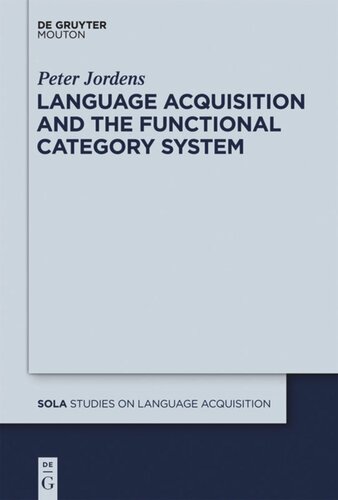

Most ebook files are in PDF format, so you can easily read them using various software such as Foxit Reader or directly on the Google Chrome browser.
Some ebook files are released by publishers in other formats such as .awz, .mobi, .epub, .fb2, etc. You may need to install specific software to read these formats on mobile/PC, such as Calibre.
Please read the tutorial at this link: https://ebookbell.com/faq
We offer FREE conversion to the popular formats you request; however, this may take some time. Therefore, right after payment, please email us, and we will try to provide the service as quickly as possible.
For some exceptional file formats or broken links (if any), please refrain from opening any disputes. Instead, email us first, and we will try to assist within a maximum of 6 hours.
EbookBell Team

0.0
0 reviewsResearch on spontaneous language acquisition both in children learning their mother tongue and in adults learning a second language has shown that language development proceeds in a stagewise manner. Learner utterances are accounted for in terms of so-called 'learner languages'. Learner languages of both children and adults are language systems that are initially rather simple. The present monograph shows how these learner languages develop both in child L1 and in adult L2 Dutch. At the initial stage of both L1 and L2 Dutch, learner systems are lexical systems. This means that utterance structure is determined by the lexical projection of a predicate-argument structure, while the functional properties of the target language are absent. At some point in acquisition, this lexical-semantic system develops into a target-like system. With this target-like system, learners have reached a stage at which their language system has the morpho-syntactic features to express the functional properties of finiteness and topicality. Evidence of this is word order variation and the use of linguistic elements such as auxiliaries, tense, and agreement markers and determiners. Looking at this process of language acquisition from a functional point of view, the author focuses on questions such as the following. What is the driving force behind the process that causes learners to give up a simple lexical-semantic system in favour of a functional-pragmatic one? What is the added value of linguistic features such as the morpho-syntactic properties of inflection, word order variation, and definiteness?